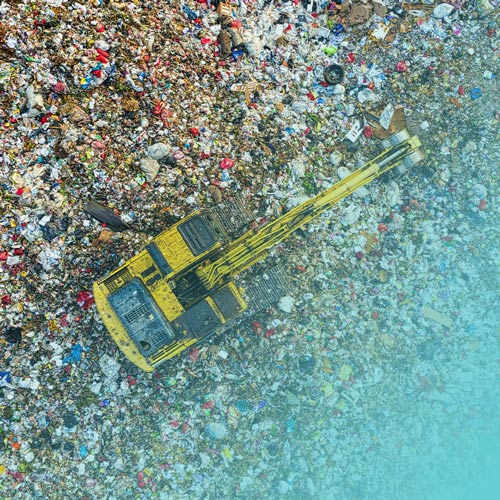CURRENT CHALLENGES
Rhode Island’s recycling efforts are falling short.
Even though 80% of households have access to curbside or drop-off recycling, the state’s overall recycling rate stands at 26%. Providence, the capital, is the worst performer, with diversion and recycling rates in the single digits, with 648 pounds of collected recyclables per household annually rejected due to contamination.
These inefficiencies result in over 121,000 tons of recyclable material being lost annually, a significant economic and environmental setback.

Environmental and Infrastructure Crisis
Rhode Island's recycling shortfalls contribute to multiple problems:
- ●Central Landfill in Johnston is nearing maximum capacity and facing closure, due to an excess of preventable waste.
- ●Litter continues to plague parks, roads, shorelines, and Narragansett Bay, damaging natural habitats and spaces.
- ●Reliance on virgin materials with higher carbon footprints undermines the state's net-zero greenhouse gas goal.
- ●Inadequate infrastructure fails to support domestic manufacturers' growing demand for high-quality recyclable materials.
A Solution
HIGH PERFORMANCE RECYCLING POLICY
Rhode Island can dramatically improve and transform its recycling outcomes by adopting and implementing a comprehensive high performance recycling policy, which integrates two proven approaches:
- 1Bottle Bill/Deposit Return System (Recycling Refunds): A system that empowers and encourages consumers to redeem, return and recycle beverage containers, be it cans or bottles – for cash!
- 2Extended Producer Responsibility (EPR): A policy that holds producers accountable for the entire lifecycle of their materials and products, including the cost to collect and process recyclables.
This producer-designed, –funded and –operated approach will maximize recycling rates, deliver economic and environmental benefits, and minimize environmental harm and pollution in the Ocean State, while saving taxpayer dollars.




